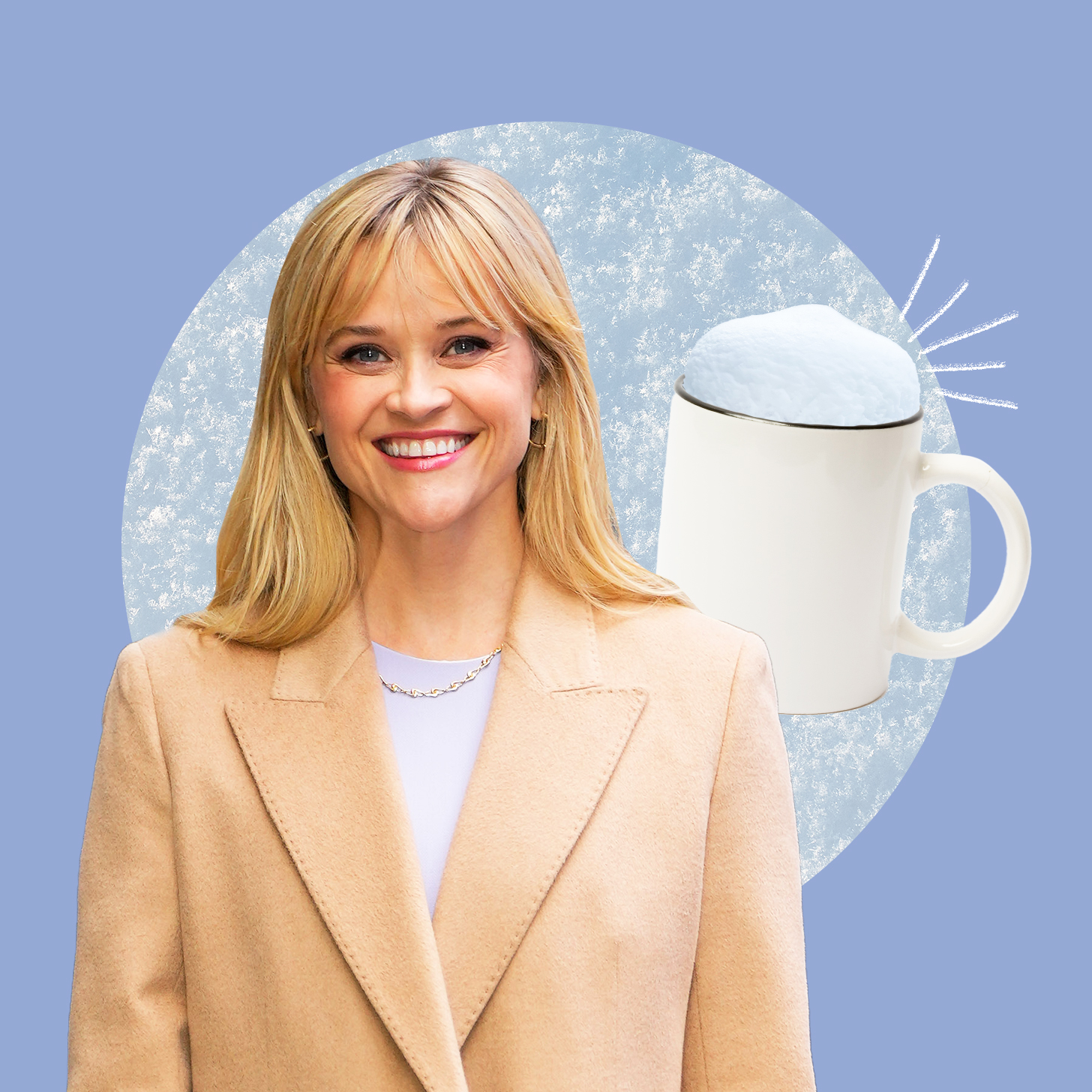
- POPSUGAR Australia
- Fitness
- Reese Witherspoon’s Chococinno Sparks a TikTok Debate: Is It Safe to Eat Snow?
Reese Witherspoon’s Chococinno Sparks a TikTok Debate: Is It Safe to Eat Snow?

A quick scroll on TikTok these last few days will point you straight to Reese Witherspoon’s seemingly delicious “chococinno.” The viral recipe consists of snow, salted-caramel sauce, chocolate sauce, and cold brew (yum!). But since sharing the snow-day treat with the internet, Witherspoon has gotten tons of comments and questions on her post about whether or not it’s actually safe to eat snow. As a kid, you probably heard the warning from your parents or teachers: “Don’t eat yellow snow!” – but what about the white fluffy stuff?
Hate to burst your icy bubble, but you should avoid eating large quantities of snow, says Laura Purdy, MD, a board-certified family-medicine physician. “If there are pollutants, dirt, or pesticides you cannot see mixed in with the snow, it would be dangerous to consume,” she explains. For example, snow that lands on chemically sprayed grass may unknowingly contain pesticides, and snow on the street or sidewalk may have rocks, dirt, or chemicals mixed in, she adds.
OK, but is it ever safe to eat snow? And how can you tell if it’s contaminated? Here’s what you need to know.
Is It Safe to Eat Snow?
It depends. If you are in a rural area with freshly fallen powder, it’s likely safe to eat snow, Dr. Purdy says. To take it one step further, fresh, newly fallen snow, the furthest away from the ground, is safest to consume, she explains.
Just keep in mind that snow can absorb whatever it is surrounded by and/or lands on, Dr. Purdy says. “If you live in the city where there are more pollutants than you would find in a rural area, I would recommend against it.”
There’s no official snow-eating guidelines from the Centers for Disease Control and Prevention (CDC), and catching a few flakes on your tongue is no big deal, but on the whole, the less snow you consume, the better.
How to Tell If Snow Is Contaminated
As a general rule of thumb, the longer snow has been sitting, the higher the chance it’s been contaminated, Dr. Purdy says. “I would also recommend not eating any snow that has been plowed, shoveled, or stepped in due to the chance of contamination.”
Additionally, avoid eating snow if you can see dirt or debris in, on, or around it or if it’s touching the ground or something unsanitary like a garbage can, Dr. Purdy says. And if it has a color to it (even a tint!), it’s a no-go, she adds.
Wind can also blow contaminants like dirt, soot, and run-off into the snow, so avoid snacking on the fluffy stuff on a windy day to play it safe.
What to Do If You Think You’ve Eaten Contaminated Snow
Don’t panic. You’ll likely be OK, but if you consume anything mixed in with the snow that is harmful or contaminated, you may experience an upset stomach or diarrhea, Dr. Purdy says.
“Most of our immune systems should help prevent sickness, but there is always a risk of toxic exposure,” Dr. Purdy explains. In that case, if you have severe abdominal pain, excessive diarrhea, extreme nausea, or a fever, visit a healthcare provider ASAP, she adds. From there, they can test for toxic substances and prescribe the proper treatment.
All that said, if you have any concerns about eating contaminated snow or ingesting any known pesticides or chemicals, then absolutely speak with your doctor, Dr. Purdy says.


